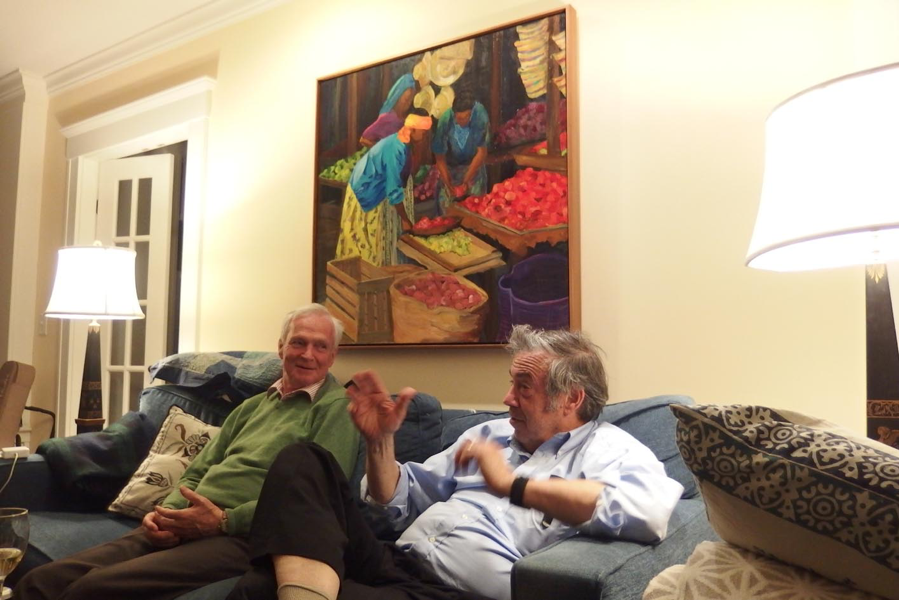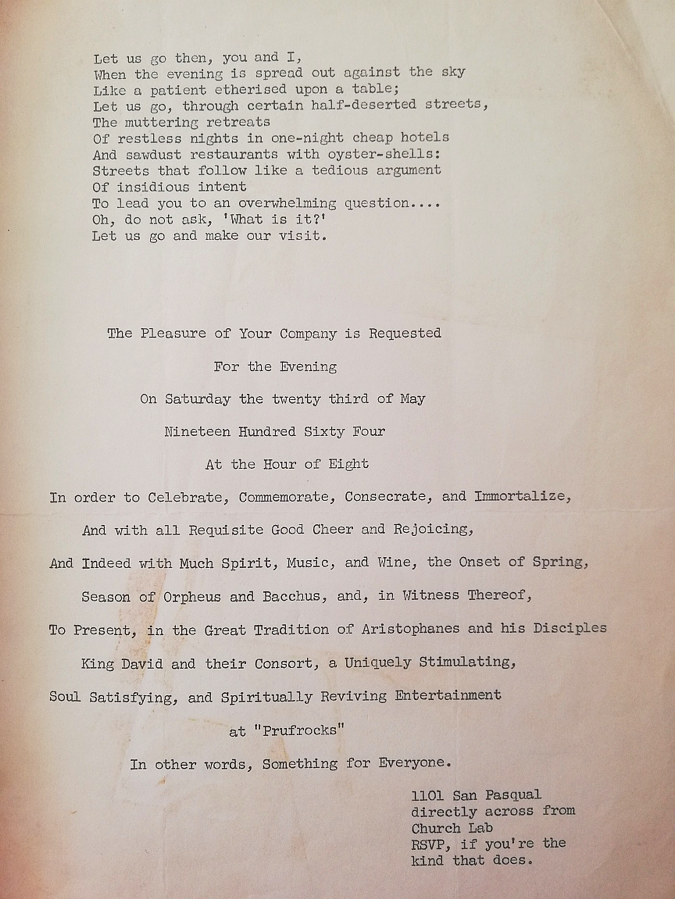From Prufrock House to Antarctica
Charles N. David
Professor of Cell and Developmental Biology, emeritus
Ludwig-Maximilians-University
Grosshadernerstr. 2
82152 Planegg-Martinsried
Germany
david@bio.lmu.de
Jon and I were roommates for several years at Caltech and for several months in a tent in Antarctica. This combination may seem a bit bizarre but it accurately describes the facts and is the reason I can write a few words about Jon in the context of this Festschrift. Jon was not my PhD advisor and not a professional colleague, but for 5 years we shared lab space, centrifuges, incubators, autoclaves and scintillation counters in the Edgar / Delbruck lab. Jon was a student with Bob Edgar and I was a student with Max Delbruck. The lab included a “coffee room” which was used 24/7 for discussions, arguments, social planning etc. Jon was the most “social” in the group, the Great Communicator, often plucking his banjo to liven late night discussions. He hasn’t changed. The photo below shows him communicating with me at his home in Cambridge in 2015.

We lived in Prufrock House across the street (San Pasqual) from the lab, named after “The Love Song of J. Alfred Prufrock” by T.S. Eliot. Prufrock House moved several times but in our lifetime it was directly across from the lab in a large stone mansion on the corner of San Pasqual and Wilson. It has now moved again to make space for Caltech’s Neurobiology Center and San Pasqual has been absorbed into the campus. Times change. Sadly, J. Alfred Prufrock also died, when Caltech and the phone company discovered that the J. Alfred signing checks didn’t really exist (and hence could not be sued if he failed to pay his bills). Strangely, the bank never got upset about the varying signatures on J. Alfred’s checks.
Prufrock residents were a varying collection of 5-6 biology, chemistry and physics grad students. We ate together every evening, rotating the cooking, shopping and dish washing. And, on Jon’s initiative, we frequently invited Caltech faculty members for dinner. We also gave fancy parties in the name of J. Alfred Prufrock (see below).

In Prufrock House Jon and I shared a palatial master bedroom with a private bath.
Our tent in Antarctica was very different. There was no private bath and the “facility” was a hole outside the tent, which was damn cold. Our tent however, was quite cozy inside, especially when heated by a Coleman stove. Steak for dinner meant get a frozen one from a box outside the tent and then melt it slowly over the Coleman stove inside the tent. We spent New Years Eve 1967 in the tent in Wheeler Valley. The celebration included a bottle of cognac, which we had brought along for the occasion. We had a vintage tape recorder, which Jon left running as the evening progressed and we reminisced about life in general and various girlfriends in particular. From a purely historical perspective it would be interesting to listen to the tape again, but Jon has kept it under wraps and so I don’t know who is more compromised. I do have one other memory of that New Years Eve: stepping outside the tent around midnight into bright sunshine but a cold wind off the polar plateau. We had to do this “stepping outside” regularly every three hours to take measurements on a set of meterological instruments.
While the Antarctic expedition was a real adventure for both of us, we also collected a lot of good scientific data on microbiological life in the Dry Valleys. Soil samples were collected at many sites and analyzed in a well-equipped lab in McMurdo Station. Navy helicopters stationed at McMurdo made it comparatively easy to sample widely separated sites. And this sampling coupled with lab analyses of the soil samples allowed us to develop a theory for the distribution of microbial life in the Dry Valleys. Three interesting publications resulted from this work (see Jon’s bibliography), the only papers I published with Jon.
One consequence of our engagement with the Dry Valleys is that two of them, David Valley and King Valley, bear our names. Of course, Jon did not name his valley (inappropriate hybris), rather our leader Roy Cameron did. And the names seem to have stuck. See https://en.wikipedia.org/wiki/David_Valley. The weather in David Valley is reported daily https://www.yr.no/en/forecast/daily-table/2-6631866/Antarctica/David%20Valley. The current temperature is -24 degrees and it is still “summer” in Antarctica! There is no danger that David Valley will become a tourist attraction, but I would be interested in visiting again. Jon, do you want to join me??

